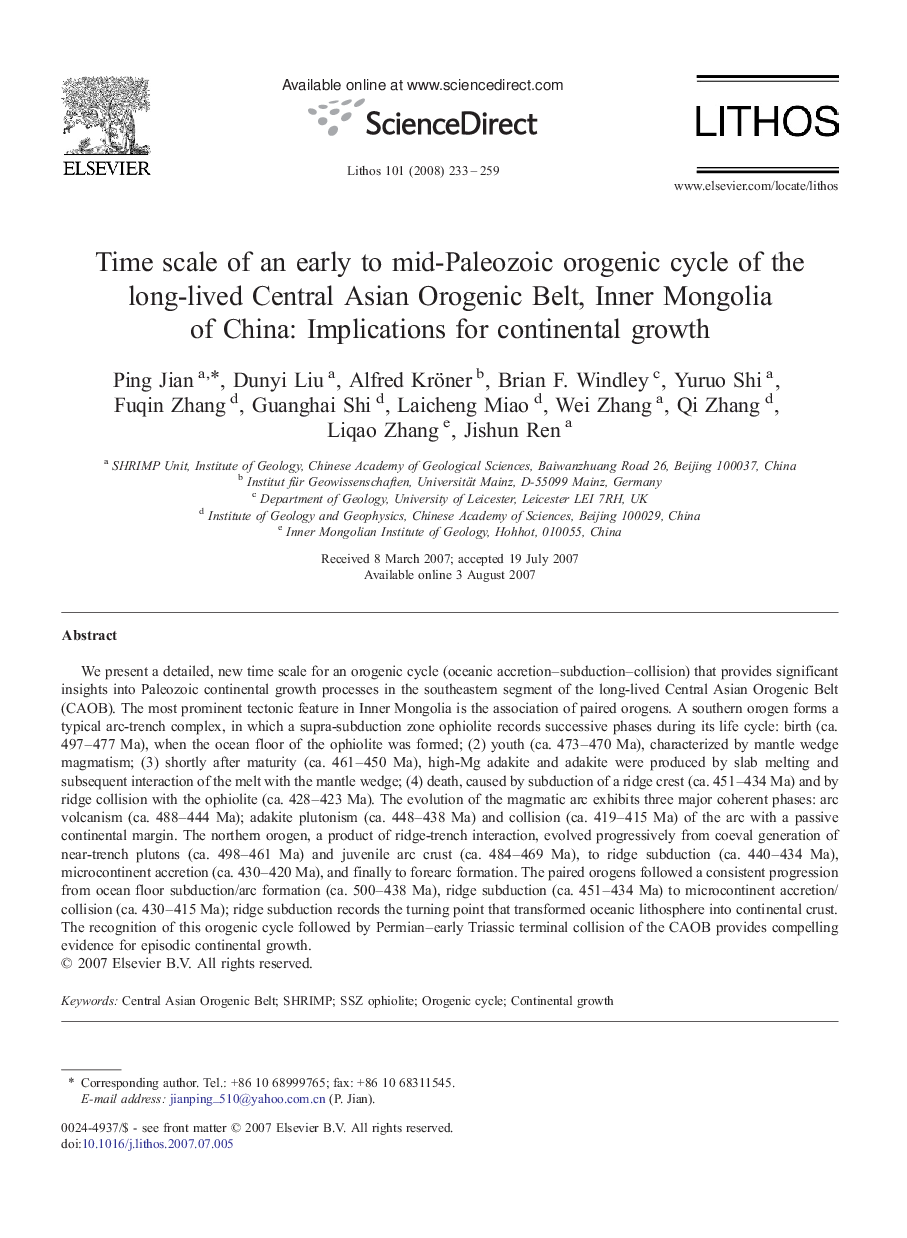| کد مقاله | کد نشریه | سال انتشار | مقاله انگلیسی | نسخه تمام متن |
|---|---|---|---|---|
| 4717628 | 1638759 | 2008 | 27 صفحه PDF | دانلود رایگان |

We present a detailed, new time scale for an orogenic cycle (oceanic accretion–subduction–collision) that provides significant insights into Paleozoic continental growth processes in the southeastern segment of the long-lived Central Asian Orogenic Belt (CAOB). The most prominent tectonic feature in Inner Mongolia is the association of paired orogens. A southern orogen forms a typical arc-trench complex, in which a supra-subduction zone ophiolite records successive phases during its life cycle: birth (ca. 497–477 Ma), when the ocean floor of the ophiolite was formed; (2) youth (ca. 473–470 Ma), characterized by mantle wedge magmatism; (3) shortly after maturity (ca. 461–450 Ma), high-Mg adakite and adakite were produced by slab melting and subsequent interaction of the melt with the mantle wedge; (4) death, caused by subduction of a ridge crest (ca. 451–434 Ma) and by ridge collision with the ophiolite (ca. 428–423 Ma). The evolution of the magmatic arc exhibits three major coherent phases: arc volcanism (ca. 488–444 Ma); adakite plutonism (ca. 448–438 Ma) and collision (ca. 419–415 Ma) of the arc with a passive continental margin. The northern orogen, a product of ridge-trench interaction, evolved progressively from coeval generation of near-trench plutons (ca. 498–461 Ma) and juvenile arc crust (ca. 484–469 Ma), to ridge subduction (ca. 440–434 Ma), microcontinent accretion (ca. 430–420 Ma), and finally to forearc formation. The paired orogens followed a consistent progression from ocean floor subduction/arc formation (ca. 500–438 Ma), ridge subduction (ca. 451–434 Ma) to microcontinent accretion/collision (ca. 430–415 Ma); ridge subduction records the turning point that transformed oceanic lithosphere into continental crust. The recognition of this orogenic cycle followed by Permian–early Triassic terminal collision of the CAOB provides compelling evidence for episodic continental growth.
Journal: Lithos - Volume 101, Issues 3–4, March 2008, Pages 233–259